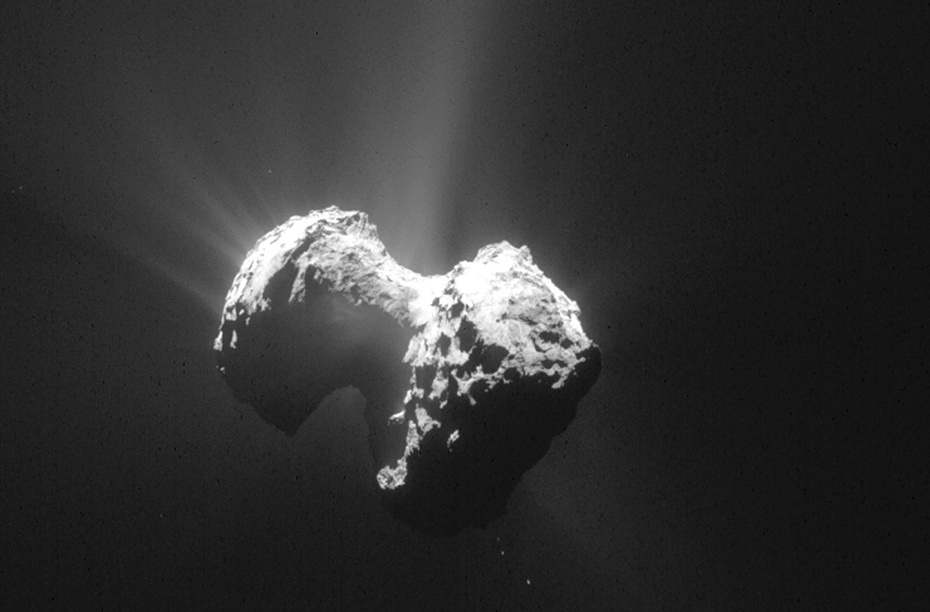BERLIN — Scientists have found further evidence supporting the theory that some of the building blocks for life may have come to Earth from outer space.
Using instruments aboard the European space probe Rosetta, researchers detected glycine and phosphorus in the dusty halo around a comet.
Glycine is an amino acid, one of the molecules needed to make proteins, while phosphorus is essential for DNA and cells.
Their presence in the coma enveloping comet 67P/Churyumov-Gerasimenko “supports the idea that comets delivered key molecules for prebiotic chemistry throughout the solar system and, in particular, to the early Earth,” according to the study published online Friday by the journal Science Advances.
Scientists say adding a high concentration of those molecules to a body of water could have produced the “primordial soup” that gave birth to life on our planet more than 4 billion years ago.
“The beauty of it is that the material in the comet was formed before the Sun and planets formed, in the cold environment of the star forming region (known as the) molecular cloud,” said Kathrin Altwegg, a physicist at the University of Bern, Switzerland, who led the study.
“That means what has happened a long time ago in the cloud from which our solar system emerged could happen in all clouds,” Altwegg said. “Then you just need another planetary system forming with a planet at the right position and you could have another go at life. It may not be successful, but as there are billions of stars and as we now know billions of planets, chances are good.”
Jonathan Lunine, director of the Center for Astrophysics and Planetary Science at Cornell University, said scientists had expected to find glycine in comets.
“This is because glycine is so simple and easy to make,” said Lunine, who wasn’t involved in the study.
In fact, glycine has already been detected in meteorites, and NASA’s Stardust mission collected samples of dust from comet Wild 2 that were found to contain glycine. Because those samples were processed on Earth, however, there was a possibility that the glycine could have resulted from contamination. Scientists used a technique known as isotopic analysis to conclude that the molecules had likely come from a comet.
“Our detection is a very direct measurement with no human interference directly at the comet,” said Altwegg, adding that phosphorus has never previously been confirmed in a comet.
Lunine said confirmation of glycine on 67P would provide a useful comparison for future space missions to ocean worlds like those of Enceladus and Europa – moons of Saturn and Jupiter, respectively – that some scientists think could harbor life.
Send questions/comments to the editors.



Success. Please wait for the page to reload. If the page does not reload within 5 seconds, please refresh the page.
Enter your email and password to access comments.
Hi, to comment on stories you must . This profile is in addition to your subscription and website login.
Already have a commenting profile? .
Invalid username/password.
Please check your email to confirm and complete your registration.
Only subscribers are eligible to post comments. Please subscribe or login first for digital access. Here’s why.
Use the form below to reset your password. When you've submitted your account email, we will send an email with a reset code.